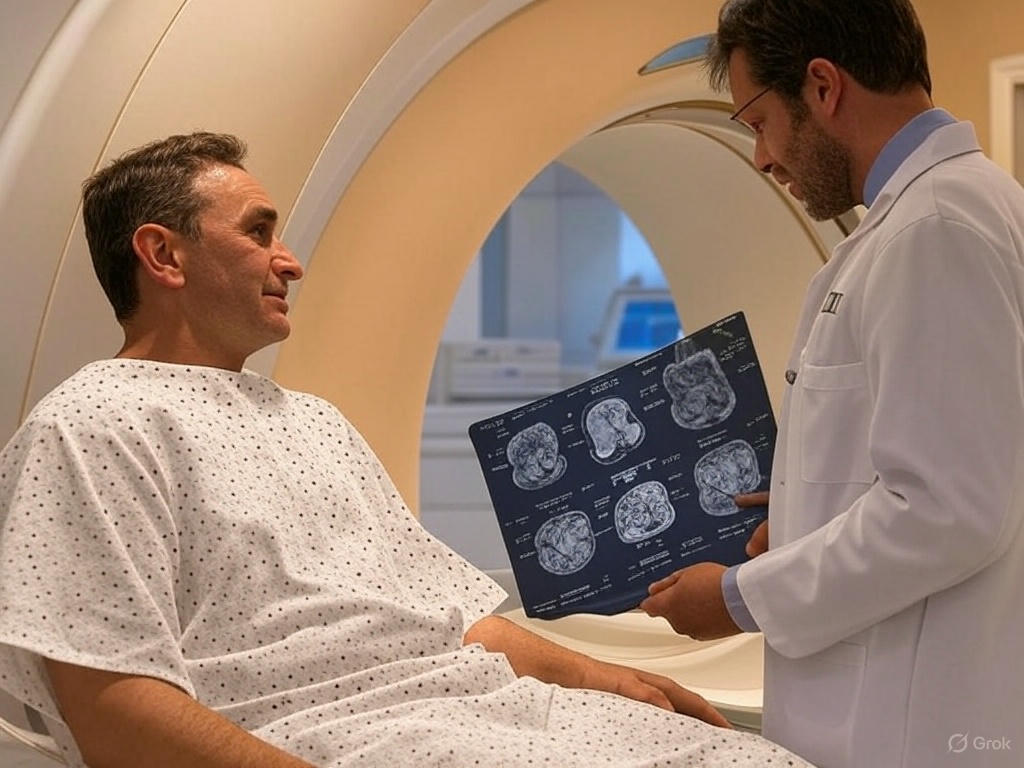If your doctor has recommended a second MRI scan with contrast, you might be wondering why it’s necessary. MRI scans are a critical diagnostic tool, and sometimes a second scan with contrast is required to provide clearer insights into your health. In this article, we’ll explore the reasons behind this recommendation, how contrast is used, and the differences between MRI with and without contrast. You can also book an online appointment for MRI Scan
What is an MRI with Contrast?
An MRI with contrast involves the use of a special dye, usually containing gadolinium, which is injected into the bloodstream. This contrast agent enhances the visibility of specific tissues, blood vessels, or abnormalities, making it easier for radiologists to detect and evaluate conditions that might not be visible on a standard MRI.

Book your Second MRI Scan
MRI Scan, CT Scan, 3t MRI Scan, PET Scan, ECG, ECO, Cardio Scan and other scan
Why Would a Doctor Order a Second MRI with Contrast?
Here are some common reasons why a second MRI with contrast might be necessary:
- Clarifying Initial Findings
If the first MRI reveals an abnormality but lacks sufficient detail, a second scan with contrast can help determine whether it’s a tumor, infection, inflammation, or another condition. - Monitoring Treatment Progress
For patients undergoing treatment for conditions like cancer or multiple sclerosis, a second MRI with contrast can assess how well the treatment is working by highlighting changes in lesions or inflamed areas. - Detecting Recurrence or New Abnormalities
Patients with a history of conditions like brain tumors may need a second MRI with contrast to check for recurrence or new issues. - Evaluating Blood Flow and Vascular Issues
Contrast-enhanced MRIs are particularly useful for examining blood vessels and identifying problems like aneurysms or blockages. - Pre-Surgical Planning
A second MRI with contrast can provide a detailed map of the affected area, helping surgeons plan procedures with greater precision.
When is an MRI with Contrast Ordered?
An MRI with contrast is typically ordered in the following situations:
- To evaluate blood vessels or blood flow.
- To detect or monitor tumors, lesions, or inflammation.
- When initial imaging results are inconclusive.
- To assess post-surgical changes or treatment effectiveness.
How is Contrast Injected for an MRI?
The contrast agent is injected into a vein in your arm or hand using a small needle. The process is quick and similar to receiving an IV. Once injected, the dye circulates through your bloodstream, enhancing the visibility of specific areas during the scan. Most patients experience minimal discomfort during the injection.
What Does an MRI Without Contrast Show?
An MRI without contrast provides detailed images of the body’s internal structures, including bones, soft tissues, and organs. It is useful for evaluating structural issues like herniated discs or joint injuries but may not provide enough detail to distinguish between certain tissues or detect small abnormalities.
Does an MRI Without Contrast Show Inflammation?
While an MRI without contrast can sometimes show signs of inflammation, such as swelling or tissue changes, it is not as effective as a contrast-enhanced MRI. The contrast dye highlights areas of increased blood flow and tissue activity, which are key indicators of inflammation.
MRI with Contrast vs Without Contrast: Key Differences
Aspect | MRI Without Contrast | MRI With Contrast |
Purpose | Evaluates structural abnormalities | Detects tumors, inflammation, blood flow issues |
Detail | Provides basic anatomical images | Enhances visibility of specific tissues and abnormalities |
Use of Dye | No contrast agent used | Contrast dye (gadolinium) injected into the bloodstream |
Best For | Herniated discs, joint injuries, brain anatomy | Tumors, vascular issues, inflammation, treatment monitoring |
Is a Second MRI with Contrast Safe?
For most patients, MRI scans with contrast are safe and well-tolerated. However, inform your doctor if you have kidney problems or a history of allergic reactions to contrast agents. Side effects are rare but may include headaches, nausea, or mild allergic reactions. Severe reactions are extremely uncommon. you can check MRI safety
Conclusion
A second MRI with contrast is often necessary to provide additional insights that a standard MRI cannot offer. Whether it’s to clarify initial findings, monitor treatment progress, or plan for surgery, this advanced imaging technique plays a vital role in accurate diagnosis and effective care. If your doctor recommends a second MRI with contrast, don’t hesitate to ask questions to better understand the process and its benefits.
